| Columns Retired Columns & Blogs |
The P3-24's replacement is already out, the RP3.
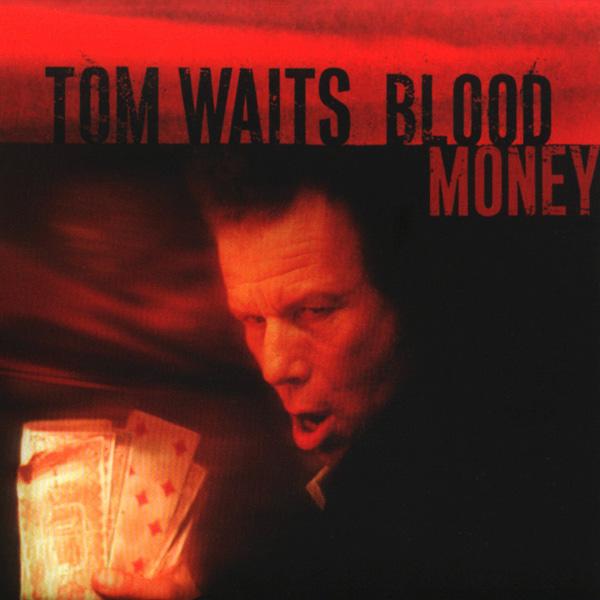
10. AudioQuest Rocket 33 loudspeaker cable: $299/10ft pair

The least expensive speaker cable in AudioQuest’s Rocket Series, the 33 produced a huge, exciting step up from my RadioShack Flat Megacable speaker wire, conveying music with more color, texture, clarity, and vibrancy. It’s also attractive, robust without being ridiculously thick or overbuilt, and it’s got a cool name. What more can you ask for in a cable? It works.
9. Thinksound ts02 in-ear headphones: $79.99
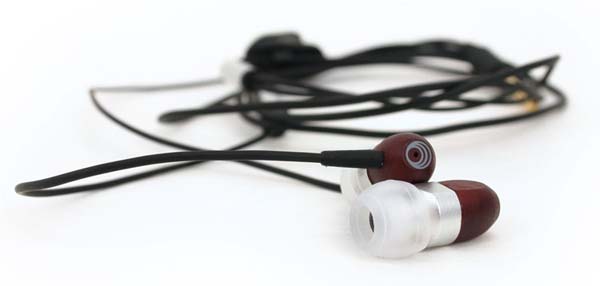
I don’t enjoy putting things in my ears and I’m not really interested in portable listening—music is always playing in my mind and I enjoy the sounds of the world around me—but, when I do want to listen while on the go, I invariably reach for my Thinksound ts02s. The wood bodies are attractive; I like the eco-friendly design; the tips fit very comfortably in my ears; and the sound is full-bodied, well-balanced, and musical. These are, by far, my favorite in-ears for under $100. I bought a bunch of these for friends.
Note: Thinksound also recently announced the ms01, the first model in the company’s new Monitor Series, at $99.99—and a sample just arrived in our office!
8. Audioengine 5 powered loudspeaker

The A5 has been replaced by the 5+ ($399/pair) with beefier binding posts, improved thermal management, and smoother bass response, but the original was already an impressive product, delivering a coherent, authoritative sound, while proving exceptionally versatile and user-friendly. My friend Natalie bought a pair and she loves them.
7. Music Hall USB 1 turntable: $249

When I reviewed the Audioengine 5 powered loudspeaker, I used it with the Music Hall USB-1. The two combined for a quick, easy, worry-free system. For the listener who wants to quickly and easily get into vinyl (and who also wants the ability to digitize LPs and who also wants to enjoy music from an iPod and who also wants to avoid things like phono preamps and cables), I can’t think of a better way to go. It would be pretty hard to have more fun for just $250 without waking up in jail or with a massive hangover.
Natalie also bought a USB-1; it’s been the source for many great parties.
6. NAD C 316BEE integrated amplifier: $380

A descendant of NAD’s legendary 3020 integrated amplifier, the C 316BEE is compact, handsome, user-friendly, and sounds much more powerful than its rated 40Wpc. It impresses me more every day. I bought the review sample.
5. Sony Playstation 1 CD player

As I mentioned in “The Entry Level” in our January 2012 issue, I received a sample of the Sony Playstation 1 from AudioStream’s Michael Lavorgna. It’s everything ML and Art Dudley said. Plus: It looks awesome in a stereo system, it’s a lot of fun to use, and it makes some more ambitious players just seem silly. Search for one on eBay or at your local thrift shop.
4. Boston Acoustics A25 loudspeaker: $299.98/pair
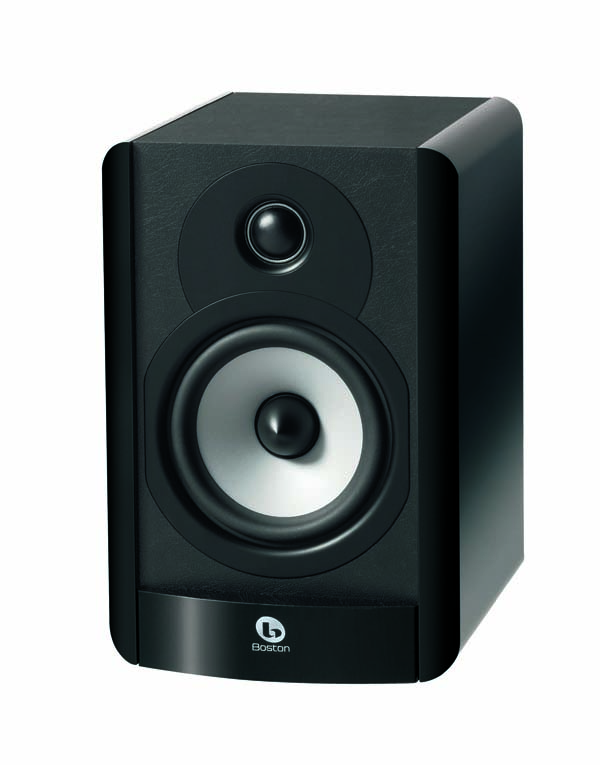
Unlike other overachievers discussed in my column this year (see the Wharfedale Diamond 10.1 loudspeakers and Rega RP1 turntable below), the Boston Acoustics A25 loudspeakers were not treated to additional coverage in a complete equipment report, but that doesn’t mean they don’t deserve it. I would hate for this speaker to be forgotten or overlooked. Designed and voiced by an expert team including Marantz’s Ken Ishiwata, the A 25 is gorgeous, built like a brick, and delivered an exceptionally musical, well-balanced sound. I miss these little guys and would love to hear them in a system comprising Marantz’s entry-level gear.
Note: Look for John Atkinson's measurements in an upcoming issue of Stereophile.
3. Wharfedale Diamond 10.1 loudspeaker: $350/pair
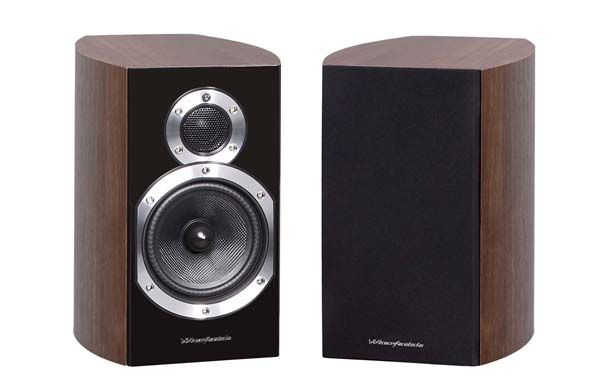
Wharfedale simply hit it out of the park with the Diamond 10.1, a speaker whose smooth, relaxed sound, handsome overall design, and surprisingly high level of fit and finish can compete with speakers in the $1000/pair range. While the Diamond 10.1 was in my modest listening room, I felt so fancy!
2. Rega RP1 turntable: $445

I was as sad as anyone to see Rega discontinue the super cool P1, but with their latest plug-and-play record player, the British company took a great thing and made it even better. The RP1 almost makes me regret spending so much more on my Rega P3-24. If the RP1 came in glossy finishes, I would surely cry.
Note: Word on the street is that Rega will soon introduce a ‘table to replace the P3-24. And it will be beautiful. [Sigh.]
1. Pioneer SP-BS41-LR loudspeaker: $150/pair
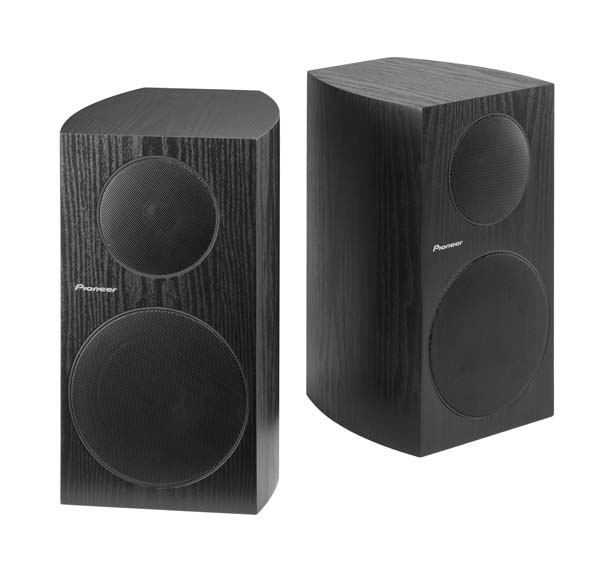
Basically, at the low, low price of $150/pair, you just can’t beat Andrew Jones’ frustratingly named Pioneer SP-BS41-LR. This is a serious loudspeaker, designed by a serious engineer, offered at a seriously affordable price, capable of opening the hi-fi hobby to a new world of listeners. Nothing in hi-fi makes me happier. I mean, Andrew Jones’ autograph could probably fetch more than $150 on Audiogon. I would pay $150 extra if Pioneer gave the SP-BS41-LR a real name.
Note: We’ve received letters from readers who’ve been trying to purchase a pair of these little wonders, but haven’t been able to find them anywhere. Due to the speaker’s popularity, Pioneer is currently out of stock, but we’ve been assured that the speaker will again be available from Pioneer’s website in just a matter of months. You better believe that I’ll be buying a pair.

The P3-24's replacement is already out, the RP3.

...to hook up 300 hundred dollar speakers? I think I'd opt for 600 dollar speakers and zip cord.![]()

6 months ago I would have agreed with the $600/ zip cord argument.
Then I assembled my own speaker cables with braided CAT-5 network cable, just to see what difference there was. There was a huge improvement. My wife was upstairs, and heard a difference.
If you can get good $300 speakers (I might try the BA A25's, BA makes some great, underapreciated stuff), you will probably get your moneys worth from the cable.

I too tried CAT5 cable as a speaker cable and remember thinking it sounded pretty darned good compared to the overpriced hi-fi variety (particularly as it cost me nothing, I was working for IBM at the time, around 1990). Even if you have to pay for it the cost would be low, so make that a $550 speaker / $50 cable option.
I think I tried both shielded and unshielded types, the former sounding better. Oh for the days with nothing better to do!

For Sterophile to to put together a bunch of crap and say its someone "favorite" budget components is insulting to us fellow "audiophiles"! There are so many honest to goodness budget audiophile examples that I have been reading about this year that could comprise and interesting summary. Cnet could do a better job than this!

Stephen, your list makes sense to me. It's sort of a summary of what you've written about this year. I personally have really enjoyed your columns. And I'm not insulted by your list, lol.

... for the P3-24 and RP3. I thought they were reletively close, close enough for most of the Web to comment on the RP3 indeed being the replacement, including one you made as I recall. Perhaps you've reconsidered since then.
My understanding is that the RP6 is $1500, comes with the TT-PSU, is spiritually more in line with the discontinued P5 but lacks the RB700, among other differences.

... looking over the 61-page thread on avsforum.com concerning the SP-BS41-LR and other models in Pioneer's "American Source" (meaning, designed in CA by Jones) lineup.
The story is that the American Source line was meant primarily for Best Buy to sell but BB declined the SP-BS41-LR, leaving it to CES and capture Kal's attention and subsequant exposure here and elsewhere.
It's ironic that for one of the hottest budget speakers of late 2010-2011, you can't go into *any* retail store and audition them.
Meanwhile, there have been curiosities about the little brother SP-BS21-LR (about 1" shorter, 4" woofer, $100/pr) and the big brother SP-FS51-LR (small tower, 3 woofers, originally same price as the SP-BS41-LR) Those are all at BB.
I'm old enough to remember when speaker models from even the big Japanese names hung around for more than just a year or so. I hope this line does as well.

I ask because I am thinking that a nicer turntable vintage or new will be my next audio purchase. My choice is between the Music Hall you have listed above and the Pro-Ject Essential since I already have a phono preamp.
I was wondering if you have any plans on trying out one of the Essential series Pro-Ject decks since it appears that multiple vendors have started selling on this side of the world?
I noticed both needledoctor and Insound carry them so I figured it would not be much longer before the stereo magazines pick it up. It may not seem that much different to a lot of folks here from the Debut but let me tell you if you are doing audio on the cheap a good $70 in price difference can mean than you would figure it should to say a spouse during a recession. :)

Stephen: love the uptick in budget audiophile and computer audiophile coverage on Stereophile. I'd love to see a review of the Musical Fidelity V-DAC II/Audioengine 2 combo like the video in Crutchfield (http://video.crutchfield.com/?v=884) because both are on my wishlist.

Oh since I guess I started a bad thing and everyone is asking if you will review this or that component.
So, I thought I would chime in with a confirmation post on the value of the SCPH-1001 model of the original Sony Playstation as a CD player.
The best way to describe the sound is warm like an LP. It is almost like the signal was rolled through an equalization to approximate the RIAA vinyl recording sound curve.
The sound stage is more open through this CD player than a much more expensive DAC I had between my amp and a device I was using just as a transport device.
My son noticed the level of detail was better and for the price point and mine I got for $20 it is astounding.
Now, for me the bass seemed a bit understated and the output level was low. You had to crank the amp to get volume. It did not have the detail in the highs and some parts of the mids I hear on really expensive rigs. However, sometimes I find that treatment a tad clinical and exacting for my tastes as a child of analog anyway. But the trade off to me was better rounded mids and a bass that seemed natural and full.

Couldn't resist checking Amazon today (12/21). It's available.

The $200/pr price on Pioneer's site is actually back to "normal." They were announced/intro'd Sept. 2010 at that price, and only dipped down for a while this summer, so that you could write about them. Heh. When I checked Amazon a few days ago they were $180 there. Whatever.
But let's call it $200, but then consider most of us would be buying them well, blind. FYI Best Buy has a bundle price on the '51 towers, '21 little bros, and '21 center-channel for $287. The latter, kinda like a '41 but with a second 5.25" woof and a waveguide for tweeter dispersion, is about $90 each any day of the week, and according to Jones (and Kal, in the avsforums.com comments) sounds even better vertically.
Stephen, you might consider getting 2 of the center-channel versions from BB for similar money and seeing what happens. Worse case, they have a 30-day return policy.
Everyone: don't even attempt trying to listen to any of the Pioneers at BB. Waste of time. Just buy and return if necessary---this is the path Pioneer has chosen for us, after all.

With nearly 50% of U.S. households paying NO federal income taxes, and a large percentage paying well below their share, MOST of us should be paying more taxes. That is a good reason why Stereophile is doing the right thing by publishing articles on Entry Level gear.
Thanks, Stephen!

I see, so when we are all 'equally poor' under the current progressive tax code because as you say,"..MOST of us should be paying more taxes..", Then entry level gear will be our only alternative because American companies like Boulder, VTL, and Mark Levinson, etc; will go out of business because no one will be able to afford their products. I'm sure that will be great news for Stereophile seeing that they no longer have expensive gear to review. Now comes the unemployment factor with these companies going under.
..brilliant.

I see, so when we are all 'equally poor' under the current progressive tax code because as you say,"..MOST of us should be paying more taxes..", Then entry level gear will be our only alternative because American companies like Boulder, VTL, and Mark Levinson, etc; will go out of business because no one will be able to afford their products.
I think this is too simplistic, Soulful Terrain. First, US tax rates on both wages and investment income are low in comparison with much of the rest of the West, so "taxed to death" is hyperbole. Second, if you have a fixed amount of government spending - and the discretionary proportion of the US budget is very small - then a change to a regressive tax code, such as a flat tax, disproportionately shifts the tax burden to pay for that spending on to those who can least afford it. This was discussed in Adam Smith's "The Wealth of Nations," which first outlined the benefits of capitalism and a free market.
What you need is a tax code that favors the middle class who then will spend their money on products, to the benefit of all. Why the middle class? Because poor people don't spend money on products and while rich people do, they buy a small number of very expensive products rather than a much larger number of cheap ones. See my March and September 2011 editorials - www.stereophile.com/content/upward-price-spiral and www.stereophile.com/content/high-end-audio-amp-invisible-hand, respectively - where I quoted both Adam Smith and Henry Ford on this idea.
John Atkinson
Editor, Stereophile

John,
I'm a huge fan of Adam Smith, as well as John Locke and Milton Freidman. And thanks for the links you provided, I will read them for sure.
Here's a rundown:
The most important point to remember is that last year's 11th-hour tax changes, though favorable for most, are temporary. After 2012, many provisions are set to snap back to what they were before 2001, and a few even expire this year.
That raises the dreary possibility that in less than two years we will be in a replay of last year's tax debates, but in the middle of a presidential campaign. Once again tax rates on both pay and investment income will be set to spike, especially for those at the bottom, and the estate tax will revert to a $1 million-per-individual exemption and a 55% top rate.
Income taxes - This year's rates carry over from last year, but the brackets are a bit higher than last year's due to inflation adjustments. Expires: end of 2012.
'Stealth' income taxes - Affluent taxpayers won't have deductions clipped by the so-called Pease and PEP limitations. PEP eroded the personal exemption, which is $3,700 for 2011. The Pease limit reduces a taxpayer's itemized deductions equal to 3% of adjusted gross income, above a variable threshold. Expires: end of 2012.
Investment taxes - Rates continue at historic lows for both long-term capital gains and dividends. For taxpayers in the 15% income tax bracket and below, the rate is zero. For those in the 25% bracket and above, the rate is 15%. Expires: end of 2012.
Estate and gift taxes - The system has been overhauled, with a top rate of 35% and one exemption of $5 million per individual for estate, gift and generation-skipping taxes alike. For those who can stand to part with assets, it's now possible to shift large amounts of wealth. Expires: end of 2012.
Payroll taxes - Last year's big surprise was a temporary two-percentage-point cut in the employee's share of Social Security taxes, saving a maximum of $2,136 per worker. There is no phase-out, and each partner of a married couple can get the rebate. Expires: end of 2011.
Alternative Minimum Tax (AMT) - The "patch" enacted by Congress sets the AMT exemption at $47,450 for single filers and $74,450 for married couples, slightly higher than for 2010. Expires: end of 2011.
Roth IRA conversion - The income limit for conversions has been permanently removed, so this year all taxpayers may still convert ordinary IRAs into Roth IRAs. But taxpayers who convert to Roth IRAs in 2011 no longer have the option of deferring conversion income into later years.
Foreign-account reporting - A little-noticed provision enacted last year imposes a new IRS reporting requirement on those with foreign financial assets above $50,000 in 2011. This form is different from the foreign asset report known as the FBAR.
Medical expenses - Workers with Flexible Spending Accounts (FSAs) may no longer use pretax funds to pay for many over-the-counter medicines—aside from insulin—without a prescription. But FSA funds may still be used for other, nonprescription medical items such as crutches, contact-lens solution or a wig after chemotherapy, if the individual plan allows it.
Cost-basis reporting by brokers - As of 2011, brokers must track clients' purchases of stock, real-estate investment trusts and foreign securities, and then report the original cost to the IRS when the asset is sold. This is an effort to improve tax compliance by investors. The rules for investments in mutual funds, bonds, options and many exchange-traded funds don't kick in until after 2011.
Energy tax credits for homeowners - As part of the December changes, lawmakers extended the "25(C)" credit for energy-efficient improvements, but in a way that will be useful to only a few. The amount of the credit has shrunk to a maximum of $500 per taxpayer per lifetime, so those who took last year's $1,500 credit under this provision don't qualify. The current version expires at the end of 2011, and builders and remodelers may push either to expand it or drop it altogether.
John,
Now that is just from a Federal perspective. When you factor-in Federal, State, AND local taxes, imbedded taxes, and regulatory fees - A middle class family earning between $69,000 -$139,000 will pay upward between 40% - 50% in total taxes. Nevermind the cost of implementing obamacare that will raise taxes even higher on the middle class. The Obama administration has also been flirting with a VAT tax and eliminating the home mortgage interest deduction. To me, that's taxed to death with virtually no end in sight. ;-) This only touches the surface of the draconian tax code here in the U.S.
John,
I think we both agree that America needs a new system of taxation instead of the 7,500 page monstrosity that we currently enjoy.
I favor the Fair Tax which would do these things:
The FairTax plan is a comprehensive proposal that replaces all federal income and payroll based taxes with an integrated approach including a progressive national retail sales tax, a prebate to ensure no American pays federal taxes on spending up to the poverty level, dollar-for-dollar federal revenue neutrality, and, through companion legislation, the repeal of the 16th Amendment.
The FairTax Act (HR 25, S 13) is nonpartisan legislation. It abolishes all federal personal and corporate income taxes, gift, estate, capital gains, alternative minimum, Social Security, Medicare, and self-employment taxes and replaces them with one simple, visible, federal retail sales tax administered primarily by existing state sales tax authorities.
The FairTax taxes us only on what we choose to spend on new goods or services, not on what we earn. The FairTax is a fair, efficient, transparent, and intelligent solution to the frustration and inequity of our current tax system.
The FairTax:
1.) Enables retirees to keep their entire pensions
2.) Refunds in advance the tax on purchases of basic necessities
3.) Allows American products to compete fairly
4.) Brings transparency and accountability to tax policy
5.) Ensures Social Security and Medicare funding
6.) Closes all loopholes and brings fairness to taxation
The FairTax rate of 23 percent on a total taxable consumption base of $11.244 trillion will generate $2.586 trillion dollars $358 billion more than the taxes it replaces.
The FairTax has the broadest base and the lowest rate of any single-rate tax reform plan.
Real wages are 10.3 percent, 9.5 percent, and 9.2 percent higher in years 1, 10, and 25, respectively than would otherwise be the case.
Disposable personal income is higher than if the current tax system remains in place: 1.7 percent in year 1, 8.7 percent in year 5, and 11.8 percent in year 10.
The economy as measured by GDP is 2.4 percent higher in the first year and 11.3 percent higher by the 10th year than it would otherwise be.
Consumption increases by 2.4 percent more in the first year, which grows to 11.7 percent more by the tenth year than it would be if the current system were to remain in place.
The increase in consumption is fueled by the 1.7 percent increase in disposable (after-tax) personal income that accompanies the rise in incomes from capital and labor once the FairTax is enacted.
By the 10th year, consumption increases by 11.7 percent over what it would be if the current tax system remained in place, and disposable income is up by 11.8 percent.
Over time, the FairTax benefits all income groups. Of 42 household types (classified by income, marital status, age), all have lower average remaining lifetime tax rates under the FairTax than they would experience under the current tax system.
Implementing the FairTax at a 23 percent rate gives the poorest members of the generation born in 1990 a 13.5 percent improvement in economic well-being; their middle class and rich contemporaries experience a 5 percent and 2 percent improvement, respectively.
Based on standard measures of tax burden, the FairTax is more progressive than the individual income tax, payroll tax, and the corporate income tax.
Charitable giving increases by $2.1 billion (about 1 percent) in the first year over what it would be if the current system remained in place, by 2.4 percent in year 10, and by 5 percent in year 20.
On average, states could cut their sales tax rates by more than half, or 3.2 percentage points from 5.4 to 2.2 percent, if they conformed their state sales tax bases to the FairTax base.
The FairTax provides the equivalent of a supercharged mortgage interest deduction, reducing the true cost of buying a home by 19 percent.
To me, this is the most equitable/fair form of taxation for ALL to participate.
I apologize for the lengthy response.
Thanks for responding! :-)
Mark

Absolutely agree with your assessment on these. Great sound and great value. I have the ones with mic and use them for everything including workouts, plane trips, phone calls, etc. Bought a set for my wife, and she loves them too.

Great list.
You should hear the Sony Playstation 1 modded, with a replacement power cord (I use the PS Audio Power Punch C7) and new feet (I use IsoNodes).

Picked up a Playstation remote (I think was a Playstation 2 one) and it made using the PS 1 more convenient. Will have to follow up your suggestions.

The ac cord and new feet on the PS1 are in addition to the modifications to the output stage per Mick Feuerbacher (http://dogbreath.de/PS1/index.html). Rhing via AA classifieds does this modification (no affiliation).

Great list Stephen!!!
I love the USB-1 and the Audioengines (plus of course the NAD). I reviewed the USB-1 right before CES last year and the 5s for The Daily Swarm.com as well!!
No mention of any DACs, or new style of components like the CEntrance DACmini CX??(we were very thankful to make the cover of the dec. issue btw, thanX)
Perhaps our BRAND NEW Audiophile Desktop system will interest you brotha!
We'll be showing it of at T.H.E Show at the CEntrance booth in the lobby, using a USB-1 turntable and an iPad for sources!! Come check it out!! Would be nice to s/w ya too

Stephen,
Thanks for such a great article! One quick question about the pioneer speakers would you think there would be much of a difference between the Sp-BS41-LR's and the little brothers SP-BS21-LR's? The only differences are that the woofer is 1 inch smaller in the 21's and the frequency difference is 55hz on the low end in the 41's as compared to 65hz in the 21's.
Thanks a bunch!